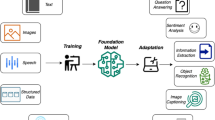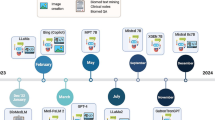Abstract
Semantic matching plays a critical role in many downstream tasks of natural language processing. Existing semantic matching methods, which focus on learning sentence semantic features based on character and word granularities, neglect to consider the special characteristics of Chinese, e.g., pinyins and radicals. However, both pinyins and radicals contain rich semantics which are able to enhance the Chinese sentence representation. In this paper, we propose a multi-granularity interaction model based on pinyins and radicals (MIPR) for Chinese semantic matching. MIPR first employs an input encoding layer to incorporate multi-granularity information including character, word, pinyin and radical granularities together, next utilizes soft-alignment attention mechanism to devise a multi-granularity interaction layer for capturing the interaction features among different granularities and sentences, then devises a feature aggregation layer to merge the various interaction features for obtaining the final matching representation, followed by a prediction layer to judge the matching degree of the pair of input sentences. Extensive experiments on two public Chinese datasets demonstrate that MIPR achieves significant improvement against the compared models and comparable performance with BERT-based model for Chinese semantic matching task.





Similar content being viewed by others
References
Chen, J., Chen, Q., Liu, X., Yang, H., Daohe, L u, Tang, B.: The BQ corpus: A large-scale domain-specific Chinese corpus for sentence semantic equivalence identification. In: Proceedings of the Conference on Empirical Methods in Natural Language Processing, pp. 4946–4951 (2018)
Chen, Q., Zhu, X., Ling, Zhen-Hua, Wei, S., Jiang, H., Inkpen, D.: Enhanced LSTM for natural language inference. In: Proceedings of the 55th Annual Meeting of the Association for Computational Linguistics, pp. 1657–1668 (2017)
Devlin, J., Chang, M.-W., Lee, K., Toutanova, K.: BERT: Pre-training of deep bidirectional transformers for language understanding. In: Proceedings of the Conference of the North American Chapter of the Association for Computational Linguistics: Human Language Technologies, pp. 4171–4186 (2019)
Fei, H., Ren, Y., Ji, D.: Improving text understanding via deep syntax-semantics communication. In: Proceedings of the Conference on Empirical Methods in Natural Language Processing: Findings, pp. 84–93 (2020)
He, Q., Wang, H., Zhang, Y.: Enhancing generalization in natural language inference by syntax. In: Proceedings of the Conference on Empirical Methods in Natural Language Processing: Findings, pp. 4973–4978 (2020)
Hu, H., Richardson, K., Xu, L., Li, L., Kübler, S., Moss, L.S: Ocnli: Original Chinese natural language inference. In: Proceedings of the Conference on Empirical Methods in Natural Language Processing: Findings, pp. 3512–3526 (2020)
Huang, Q., Bu, J., Xie, W., Yang, S., Wu, W., Liu, L.: Multi-task sentence encoding model for semantic retrieval in question answering systems. In: Proceedings of the International Joint Conference on Neural Networks, pp. 1–8 (2019)
Kim, Y.: Convolutional neural networks for sentence classification. In: Proceedings of the Conference on Empirical Methods in Natural Language Processing, pp. 1746–1751 (2014)
Kim, S., Kang, I., Kwak, N.: Semantic sentence matching with densely-connected recurrent and co-attentive information. In: Proceedings of the 33rd AAAI Conference on Artificial Intelligence, pp. 6586–6593 (2019)
Kingma, D.P., Adam, J.B.: A method for stochastic optimization. In: Proceedings of the International Conference on Learning Representations (2015)
Lai, Y., Feng, Y., Yu, X., Wang, Z., Xu, K., Zhao, D.: Lattice CNNs for matching based Chinese question answering. In: Proceedings of the 33rd AAAI Conference on Artificial Intelligence, pp. 6634–6641 (2019)
Li, X., Meng, Y., Sun, X., Han, Q., Yuan, A., Li, J.: Is word segmentation necessary for deep learning of Chinese representations?. In: Proceedings of the 57th Annual Meeting of the Association for Computational Linguistics, pp 3242–3252 (2019)
Liu, X., Chen, Q., Deng, C., Zeng, H., Chen, J., Li, D., Tang, B.: LCQMC: A large-scale Chinese question matching corpus. In: Proceedings of the 27th International Conference on Computational Linguistics, pp. 1952–1962 (2018)
Liu, L., Yang, W., Rao, J., Tang, R., Lin, J.: Incorporating contextual and syntactic structures improves semantic similarity modeling. In: Proceedings of the Conference on Empirical Methods in Natural Language Processing, pp. 1204–1209 (2019)
Liu, S., Yang, T., Yue, T., Zhang, F., Wang, D.: PLOME: Pre-training with misspelled knowledge for Chinese spelling correction. In: Proceedings of the 59th Annual Meeting of the Association for Computational Linguistics and the 11th International Joint Conference on Natural Language Processing, pp. 2991–3000 (2021)
Liu, L., Zhang, Z., Zhao, H., Zhou, X., Zhou, X.: Filling the gap of utterance-aware and speaker-aware representation for multi-turn dialogue. In: Proceedings of the 35th AAAI Conference on Artificial Intelligence, pp. 13406–13414 (2021)
Liu, W., Zhou, P., Zhao, Z., Wang, Z., Deng, H., Ju, Q.: FastBERT: A self-distilling BERT with adaptive inference time. In: Proceedings of the 58th Annual Meeting of the Association for Computational Linguistics, pp. 6035–6044 (2020)
Lu, H., Li, Y., Chen, M., Kim, H., Serikawa, S.: Brain intelligence: go beyond artificial intelligence. Mobile Networks and Applications 23(2), 368–375 (2018)
Lu, H., Yang, R., Deng, Z., Zhang, Y., Gao, G., Lan, R.: Chinese image captioning via fuzzy attention-based densenet-BiLSTM. ACM Transactions on Multimedia Computing Communications, and Applications 17(1s), 1–18 (2021)
Lu, W., Yu, R., Wang, S., Wang, C., Jian, P., Huang, H.: Sentence semantic matching based on 3D CNN for human–robot language interaction. ACM Trans. Internet Technol. 21(4), 1–24 (2021)
Lu, W., Zhang, Y., Wang, S., Huang, H., Liu, Q., Luo, S.: Concept representation by learning explicit and implicit concept couplings. IEEE Intell. Syst. 36(1), 6–15 (2021)
Lu, H., Zhang, M., Xu, X., Li, Y., Shen, H.T.: Deep fuzzy hashing network for efficient image retrieval. IEEE Trans. Fuzzy Syst. 29(1), 166–176 (2021)
Lu, C., Zhao, Y., Lyu, B., Jin, L., Chen, Z., Zhu, S., Yu, K.: Neural graph matching networks for Chinese short text matching. In: Proceedings of the 58th Annual Meeting of the Association for Computational Linguistics, pp. 6152–6158 (2020)
Lyu Lu, B., Su, C., Yu, Z.K.: Let: Linguistic knowledge enhanced graph transformer for Chinese short text matching. In: Proceedings of the 35th AAAI Conference on Artificial Intelligence, pp. 13498–13506 (2021)
Mikolov, T., Chen, K., Corrado, G., Dean, J.: Efficient estimation of word representations in vector space. arXiv:1301 (2013)
Nguyen, H., Zhang, C., Xia, C., Philip, S.Y.: Semantic matching and aggregation network for few-shot intent detection. In: Proceedings of the Conference on Empirical Methods in Natural Language Processing: Findings, pp. 1209–1218 (2020)
Peng, H., Ma, Y., Li, Y., Cambria, E.: Learning multi-grained aspect target sequence for Chinese sentiment analysis. Knowl.-Based Syst. 148, 167–176 (2018)
Sanh, V., Debut, L., Chaumond, J., Wolf, T.: DistilBERT, a distilled version of BERT: smaller, faster, cheaper and lighter. arXiv: 1910.01108 (2019)
Su, J.: Text emotion classification (iv): Better loss function (2017). https://spaces.ac.cn/archives/4293. Accessed 30 March 2017
Tan, C., Wei, F., Wang, W., Lv, W., Zhou, M.: Multiway attention networks for modeling sentence pairs. In: Proceedings of the 27th International Joint Conference on Artificial Intelligence, pp. 4411–4417 (2018)
Tao, H., Tong, S., Zhang, K., Xu, T., Liu, Q., Chen, E., Hou, M.: Ideography leads us to the field of cognition: A radical-guided associative model for Chinese text classification. In: Proceedings of the 35th AAAI Conference on Artificial Intelligence, pp. 13898–13906 (2021)
Tao, H., Tong, S., Zhao, H., Xu, T., Jin, B., Liu, Q.: A radical-aware attention-based model for Chinese text classification. In: Proceedings of the 33rd AAAI Conference on Artificial Intelligence, pp. 5125–5132 (2019)
Wang, Z., Hamza, W., Florian, R.: Bilateral multi-perspective matching for natural language sentences. In: Proceedings of the 26th International Joint Conference on Artificial Intelligence, pp. 4144–4150 (2017)
Wang, H., Wang, B., Duan, J., Zhang, J.: Chinese spelling error detection using a fusion lattice LSTM. ACM Trans. Asian Low Resour Lang. Inf. Process. 20, 1–11 (2021)
Xiang, L., Yang, S., Liu, Y., Li, Q., Zhu, C.: Novel linguistic steganography based on character-level text generation. Mathematics 8(9), 1558 (2020)
Xing, X., Wang, T., Yang, Y, Hanjalic, A., Shen, H.T.: Radial graph convolutional network for visual question generation. IEEE Transactions on Neural Networks and Learning Systems (2020)
Xu, Z., Lu, W., Li, F., Peng, X., Zhang, R.: Deep feature fusion model for sentence semantic matching. Computers, Materials and Continua 61, 601–616 (2019)
Xu, X., Wang, T., Yang, Y., Zuo, L., Shen, F., Shen, H.T.: Cross-modal attention with semantic consistence for image-text matching. IEEE Transactions on Neural Networks and Learning Systems (2020)
Yu, R., Lu, W., Lu, H., Wang, S., Li, F., Zhang, X., Yu, J.: Sentence pair modeling based on semantic feature map for human interaction with IoT devices. Int. J. Mach. Learn. Cybern. 12, 3081–3099 (2021)
Yu, S., Wang, S., Li, Y., Feng, S., Tian, H., Wu, H., Wang, H.: Ernie 2.0: A continual pre-training framework for language understanding. In: Proceedings of the 34th AAAI Conference on Artificial Intelligence, pp. 8968–8975 (2020)
Zhang, K., Lv, G., Wang, L., Wu, L., Chen, E., Wu, F., Xie, X.: Drr-net: Dynamic re-read network for sentence semantic matching. In: Proceedings of the 33rd AAAI Conference on Artificial Intelligence, pp. 7442–7449 (2019)
Zhang, K., Wu, L., Lv, G., Wang, M., Chen, E., Ruan, S.: Making the relation matters: Relation of relation learning network for sentence semantic matching. In: Proceedings of the 35th AAAI Conference on Artificial Intelligence, pp. 14411–14419 (2021)
Zhao, S., Huang, Y., Su, C., Li, Y., Wang, F.: Interactive attention networks for semantic text matching. In: Proceedings of the IEEE International Conference on Data Mining, pp. 861–870 (2020)
Zhao, P., Lu, W., Li, Y., Yu, J., Jian, P., Zhang, X.: Chinese semantic matching with multi-granularity alignment and feature fusion. In: Proceedings of the International Joint Conference on Neural Networks (2021)
Acknowledgements
The research work is partly supported by National Natural Science Foundation of China under Grant No.61502259, National Key R&D Program of China under Grant No.2018YFC0831700 and No.2018YFC0830705, and Key Program of Science and Technology of Shandong Province under Grant No.2020CXGC010901 and No.2019JZZY020124.
Author information
Authors and Affiliations
Corresponding author
Ethics declarations
Conflict of Interests
The authors declare that they have no conflict of interest.
Additional information
Publisher’s note
Springer Nature remains neutral with regard to jurisdictional claims in published maps and institutional affiliations.
This article belongs to the Topical Collection: Special Issue on Synthetic Media on the Web
Guest Editors: Huimin Lu, Xing Xu, Jože Guna, and Gautam Srivastava
Rights and permissions
About this article
Cite this article
Zhao, P., Lu, W., Wang, S. et al. Multi-granularity interaction model based on pinyins and radicals for Chinese semantic matching. World Wide Web 25, 1703–1723 (2022). https://doi.org/10.1007/s11280-022-01037-y
Received:
Revised:
Accepted:
Published:
Issue Date:
DOI: https://doi.org/10.1007/s11280-022-01037-y




